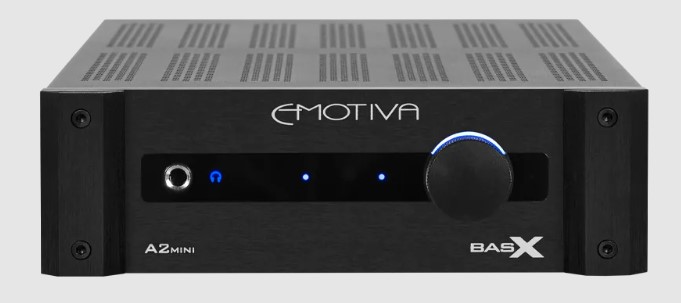Adding an External Amp With and Without Volume Control to Your Home Theater System
There are two types of external amps: those with volume controls and those without. We’ve addressed how to add an integrated amplifier to your home theater system before (link). But people are still confused about how external amps work and how they should be set up. Let’s break it down.
Don’t Home Theater Amps Come Without Volume Controls?
It would be understandable if you believed that all home theater amps came without volume controls. Most do. But that isn’t always the case. Many older models, and some newer ones with specific applications in mind, come with volume controls. External amps with volume controls are particularly useful when you are trying to compare multiple sets of speakers. The volume control allows you to level-match each set of speakers which makes head-to-head comparisons possible.
What’s The Difference?
An external amp with a volume control obviously allows you to control the volume from the amp. For most home theater applications, there is rarely a reason to want to control the volume from the amplifier. For this reason, most home theater amps do come without volume controls. On these amps, you can think of the volume level as “Maxed.” The amplifier always has the maximum amount of power available to the speakers.

What’s the Problem?
Frankly, the problem is consistent volume. Your AV receiver controls the volume that is sent to your speakers. If your external amplifier has a volume control, that amp can change the volume that is produced by your speakers. When you run your room correction, your AV receiver sets your speakers’ trim levels. By changing the volume level on the amp, you are changing what volume your AV receiver thinks your speakers are producing. This can lead to the speakers connected to your amp being either too loud or too soft.
What Do You Do?
Depending on the type of external amp you own, your initial setup will be slightly different.
External Amp Without Volume Control
For your standard home theater amplifier without volume control, you simply connect your amp to your AV receiver’s pre-outs. Next, you connect your speakers to the external amps’ speaker terminals. At that point, you may have to go into your AV receiver’s settings and let it know that you have an external amp attached (this depends on many things including the model of AV receiver and which speakers you have connected). Otherwise, you simply run your room correction and let the AV receiver do its thing.

External Amp with Volume Control
An amp with volume control is connected in exactly the same way to your AV receiver as one without volume control. The only difference is that you need to determine the volume setting on the amp. We’ve talked about this in detail here. As a quick recap, you want the volume control to be as high as possible without adding any additional noise. Once you find the perfect setting, mark the dial, make a note of it somewhere, or remove the ability to change the setting (usually by removing the knob though sometimes you can use the amps settings to lock the volume control).
Take Away
While having volume control on an external amp might be nice in some select situations, it is a detriment in home theater. While connecting an external amp without volume control is as easy as making the proper wire connections and checking the settings in your AV receiver. An amp with volume control adds an additional step and one more thing to worry about. Clearly, however, you can integrate an external amp with a volume knob into your home theater so if you can find a deal on one, don’t shy away.


